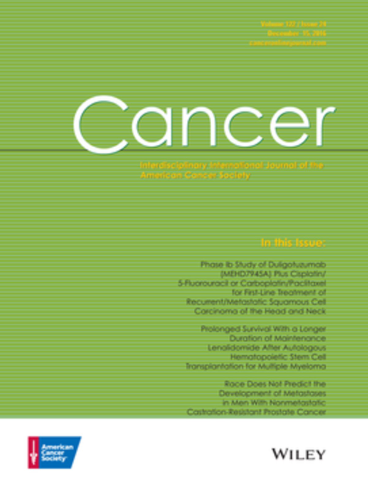Remnant cholesterol and systemic inflammation as synergistic predictors of cancer risk: A 16-year prospective cohort study
Abstract
Background
Remnant cholesterol (RC), a marker of triglyceride-rich lipoproteins, has been implicated in cardiovascular disease via inflammatory pathways, but its role in cancer development remains unclear. This study investigated the independent and joint effects of RC and systemic inflammation on long-term cancer risk.
Methods
The authors analyzed data from 136,158 participants in the Kailuan cohort who were free from cancer and cardiovascular disease at baseline. RC was calculated as total cholesterol minus high-density lipoprotein cholesterol and low-density lipoprotein cholesterol. High-sensitivity C-reactive protein (hs-CRP) was used to assess systemic inflammation. Incident cancer cases were identified during a median follow-up of 16.18 years. Cox proportional hazards models, interaction analyses, mediation analysis, and cross-lagged panel models were used to assess the relationships between RC, hs-CRP, and cancer.
Results
A total of 7080 incident cancers were recorded. Compared with the lowest quartile of RC (Q1), participants in the highest quartile (Q4) had a significantly increased risk of overall cancer (hazard ratio [HR], 1.188; 95% confidence interval [CI], 1.108–1.273), lung cancer (HR, 1.349; 95% CI, 1.179–1.543), and colorectal cancer (HR, 1.775; 95% CI, 1.443–2.184). Participants with both high RC and high hs-CRP had the highest risk (HR, 1.332; 95% CI, 1.268–1.400). Mediation analysis revealed that RC mediated 8.31% of the hs-CRP–cancer relationship, and vice versa. Cross-lagged models confirmed a bidirectional temporal association.
Conclusion
RC and systemic inflammation act synergistically and bidirectionally to increase cancer risk, supporting a metabolic–inflammatory axis in carcinogenesis. These findings identify novel, potentially modifiable targets for early cancer risk stratification and prevention.





 求助内容:
求助内容: 应助结果提醒方式:
应助结果提醒方式:


